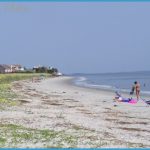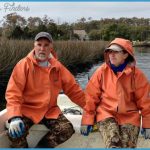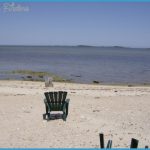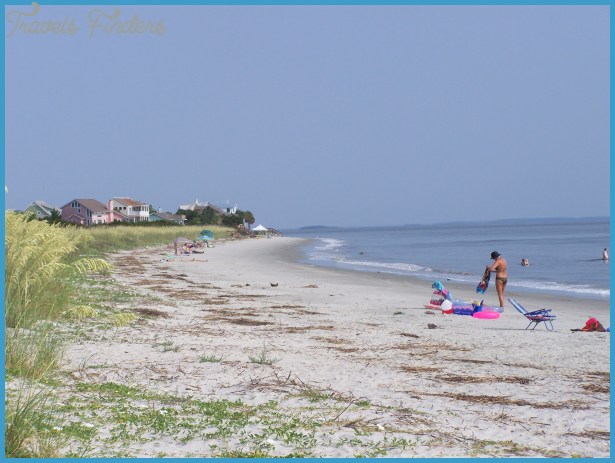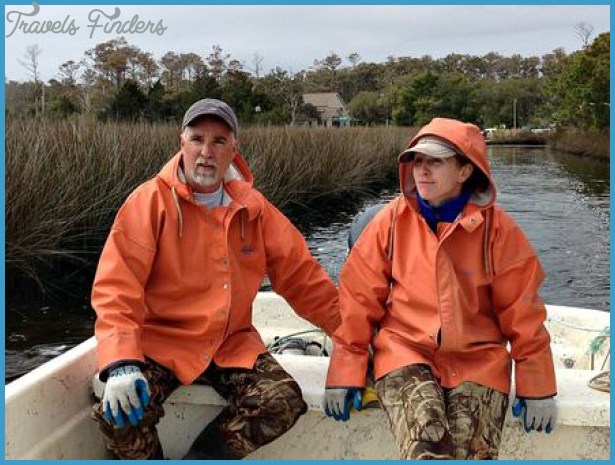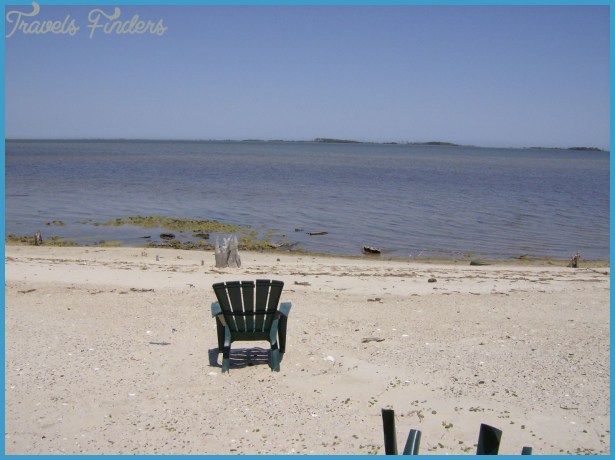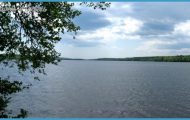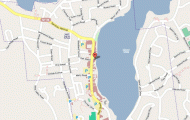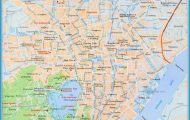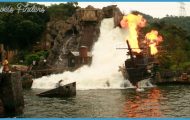The quintessential waterfront village, Beaufort, where we begin our route, lies just across the causeway from the port town of Morehead City. Once an important fishing and shipbuilding town, Beaufort has transformed into a tourist mecca with a maritime flair. Fortunately, the citizens of Beaufort have never given up their roots. The architecture and down-home hospitality remain much as they always have.
Start out at the drawbridge in Beaufort. Head east on U.S. 70. Drive 26 miles, then continue straight on NC 12. Follow it 12 miles to the Cedar Island ferry. (38 miles)
A rainbow enhances the beauty of Beaufort, a quaint waterfront village near Cape
Lookout.
The first thing you need to know about Beaufort is how to pronounce its name. Say BEW-fert, and people will think you’re from South Carolina that’s how they pronounce their town of the same name and ask you to go back. Say BOW-fert, and you’ll fit in just fine.
One person who fit in well in Beaufort was Rachel Carson, who came here in the late 1930s for coastal studies. Carson’s 1962 book Silent Spring is credited with starting the modern environmental movement. Seven years earlier, Carson wrote a book about seashore life called The Edge of the Sea, gathering much of the material for that book during the time she spent in the Beaufort area. Today you can visit the Rachel Carson National Estuarine Research Reserve, named in honor of her contributions to the environment.
While in Beaufort, you can also visit the North Carolina Maritime Museum, browse the waterfront shops, rent a kayak, fish, stroll the streets, look at the historical architecture, and eat in the many fine restaurants.
From Beaufort, we’re heading Down East to the slice of North Carolina’s sound country stretching from Beaufort to Cedar Island. Locals have been calling it by that name for as long as anyone can remember, and they might get a little riled if you ask them about other areas along the coastal plain being called that. This is the original, the ONLY Down East.
Down East’s charm lies in the fact that it has managed to avoid the late-twentieth-century transformations that characterize many other areas. For the most part, a drive to Cedar Island today is not a lot different from one made in the 1950s. The roads and bridges are better, and some of the houses are a little nicer, but Down Easters maintain a lifestyle tied to the sea, the marshes, and the farmland that surrounds them.
You’ll pass through more than a dozen villages between Beaufort and Cedar Island. Most of them are tiny, and what you see from the main road is all there is. But a few communities beg for more exploration. A highly recommended side trip is to Harkers Island. Be sure to drive out to the end of the island and visit the Core Sound Waterfowl Museum and the Cape Lookout National Seashore visitor center. Other villages worth a detour are Gloucester, Marshallberg, Davis, Sealevel, and Atlantic.
The original Cape Lookout Life Saving Station went into operation in the late 1800s. Today, the North Carolina Maritime Museum in Beaufort utilizes the facility as a marine educational center. North Carolina State Archives
A shad boat rests in Jarrett Bay at sunrise. The bay is on Core Sound in the Down East section of the state.
Up until the 1980s, fish houses thrived in the Down East region, with fishermen bringing in boatloads of shrimp, oysters, crabs, clams, and various species of fish. Sadly, most of the houses have closed their doors, unable to make a go of it in today’s economic environment. Everywhere you go on this route, you’ll find old abandoned fish houses, many of them falling into the water.
While this entire route is picturesque, a particularly scenic section is Cedar Island National Wildlife Refuge, where the road passes through a seemingly endless expanse of marsh. The best view is from the top of Monroe Gaskill Memorial Bridge in the middle of the marsh.
The road and our route end at the northern tip of Cedar Island. From here, you have only two choices. You can turn around and go back the way you came, or you can take a two-and-a-half-hour ferry ride across Pamlico Sound to Ocracoke Island at the end of Route 25. Reservations are recommended for the ferry, even in winter.
Bright and variably colored coquina clams live in the intertidal zone on North Carolina’s beaches.

